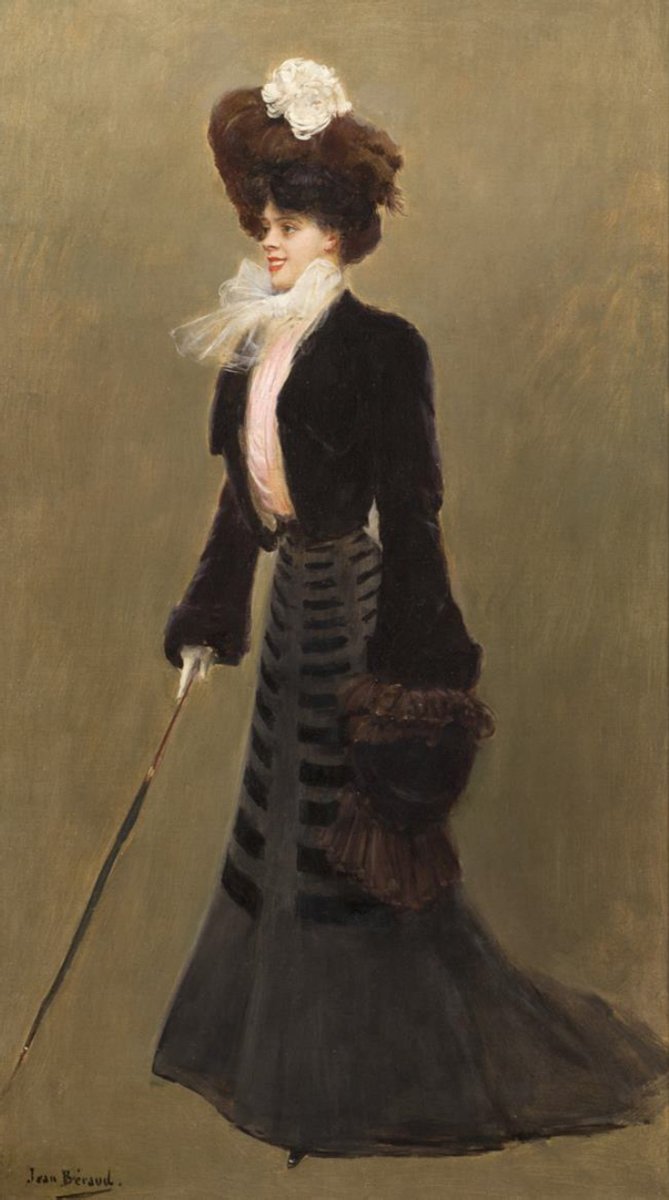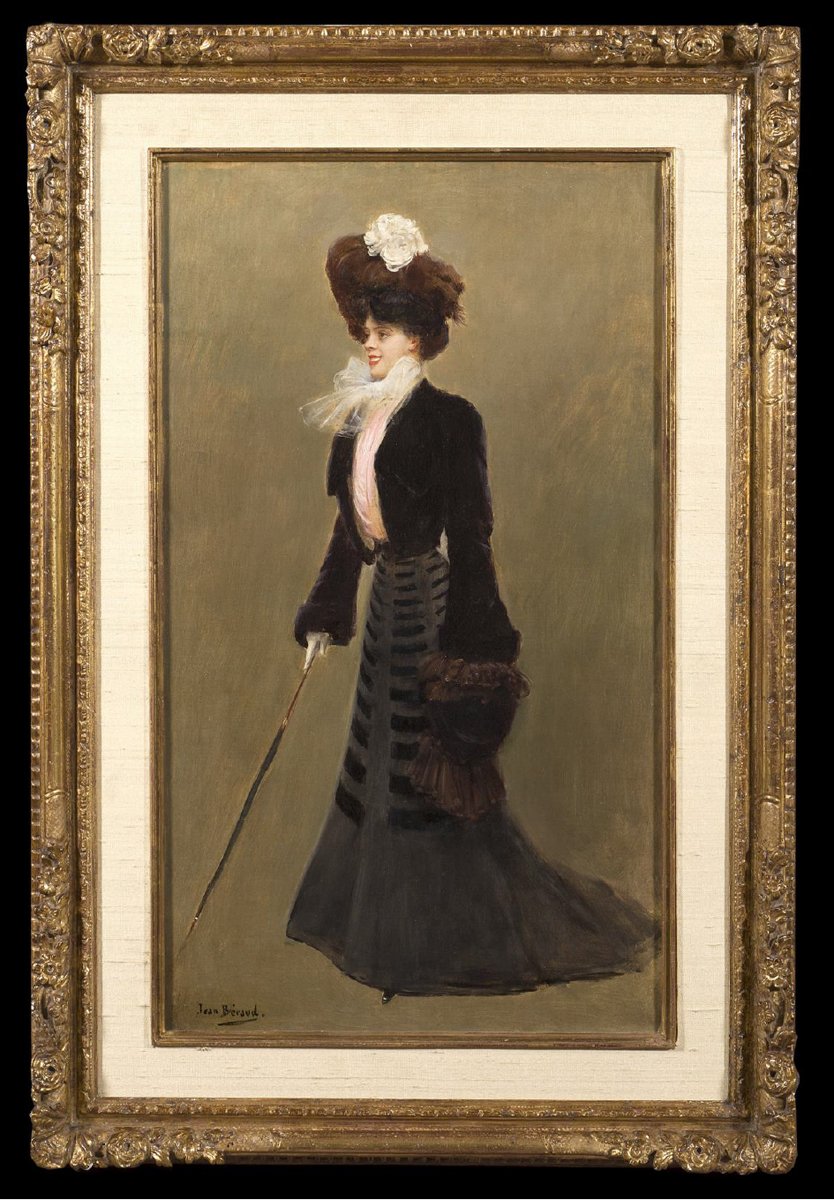Paintings
Jean Beraud
French, 1849-1935Une Parisienne
Oil on canvas21.9 x 15.2 ins / 55.5 x 38.5 cms
Une Parisienne is a prime example of Béraud’s work; a vivid, elegant portrait of a Parisian society lady from the Belle Époque. His use of browns, greys and blacks make the smiling subject seem alive, as if the sitter were about to step out of the painting to meet the viewer. Béraud has purposefully chosen to paint the woman against a plain backdrop to show the finery of her attire such as the velvet of her jacket and the chiffon of her collar and cuffs. This colour combination recalls the more formal training that Béraud undertook however the bold, firm brushstrokes create a bridge between traditional genre paintings and those of the Impressionists, who were only just emerging when Béraud was painting.
Jean Béraud was an important French painter who was most famed for his paintings of Parisian life during the Belle Époque. During this pre-war period of peace and prosperity Beraud was highly regarded in Parisian society, initially due to the numerous genre paintings he produced.
Béraud was born in St. Petersburg and initially trained in law before the outbreak of the Franco-Prussian was in 1870 and the occupation of Paris.
When Béraud began his artistic career he exhibited his works at the Salon, doing so for the first time in 1872 when he was a student of Léon Bonnat. However, his work did not gain serious recognition until 1876, when he produced a genre painting entitled, ‘On the Way Back from the Funeral’.
Notably, this was after the first exhibition of the Impressionists at the Salon des Indépendants in 1874 and as a result, his work is somewhere in the midst of the impressionistic scenes of everyday life and the more academic art of the salon.
Much of his work would contain some sort of mockery of Parisian life at the turn of the century.
Béraud was a very popular artist during his lifetime, however his work was completely ignored by art historians of the period.
Literature:
‘Jean Béraud 1849- 1935- The Belle Époque: A Dream of Times Gone By’ catalogue raisonné by Patrick Offenstadt; Page 290, Illustration no. 397
Signed lower rightProvenance:
F.Dupré, Paris
Private Collection, France;
Private Collection, United Kingdom;
Private Collection, United States
See Artist Bio below.
Jean Beraud
French, 1849-1935Jean was a French Impressionist* painter and commercial artist noted for his paintings of Parisian life during the Belle Epoque*.
Beraud was born in Saint Petersburg, Russia. His father (also called Jean) was a sculptor and was likely working on the site of St. Isaac’s Cathedral at the time of his son’s birth. Beraud’s mother was Genevieve Eugenie Jacquin; following the death of Beraud’s father, the family moved to Paris. Beraud was in the process of being educated as a lawyer until the occupation of Paris during the Franco-Prussian war in 1870.
Beraud became a student of Leon Bonnat, and exhibited his paintings at the Paris Salon* for the first time in 1872. However, he did not gain recognition until 1876, with his painting On the Way Back from the Funeral. He exhibited with the Society of French Watercolorists at the World’s Fair, Exposition Universelle in Paris* 1889. He painted many scenes of Parisian daily life during the Belle Epoque in a style that stands somewhere between the academic* art of the Salon and that of the Impressionists. He received the Légion d’honneur in 1894.
Béraud’s paintings often included truth-based humour and mockery of late 19th century Parisian life, along with frequent appearances of Biblical characters in then contemporary situations. Paintings such as Mary Magdalene in the House of the Pharisees aroused controversy when exhibited, because of these themes.
Towards the end of the 19th century, Béraud dedicated less time to his own painting but worked on numerous exhibition committees, including the Salon de la Société Nationale.
Béraud never married and had no children. He died in Paris on October 4, 1935, and is buried in Montparnasse Cemetery beside his mother.



